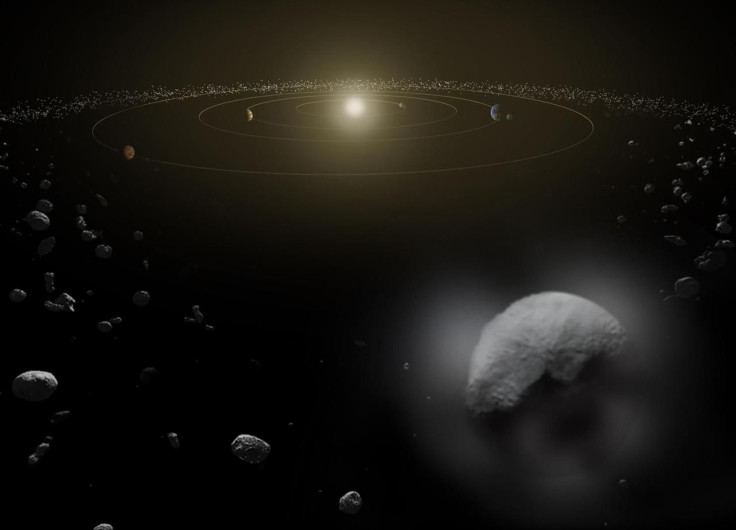NASA Asteroid Watch: 8 Near-Earth Objects To Zip Past Earth This Week
A total of 8 NEAs are on their way to pass by Earth -- one twice as tall as the Leaning Tower of Pisa
KEY POINTS
- A total of eight NEAs will pass by Earth this week
- Two of the NEAs have been included in the ESA's Risk List
- The biggest among the 8 NEAs is twice as tall as the Leaning Tower of Pisa
A total of eight asteroids is expected to zip by Earth -- with one almost twice as tall as The Leaning Tower of Pisa in Italy, and two of those are in the European Space Agency's Risk List.
The coming week will be quite eventful according to the Center for Near-Earth Object Studies' Close Approach Data Table, as a total of 8 Near-Earth Asteroids (NEA) will be flying by the home planet -- the same week when Mars is set to be in opposition.
The first two NEAs according to CNEOS are 2020TS1 and 2020TR1, expected to make their close approach on Monday (October 12) at 6:57 a.m. EDT and 3:25 p.m. EDT, respectively. The smaller of the two, 2020TS1, is taller than a London bus and is about 31 feet long. Meanwhile, 2020TR1 will be more than twice as long as 2020TS1 and is expected to be five times as tall as a Volkswagen Beetle, about 68 feet. NEA 2020TS1 is currrently included in the European Space Agency's Risk List and will pass by the Earth at a distance of just 253,705 kilometers.
Occuring on the same night when Mars will be in opposition, 2018GD2 is also set to zip past Earth on October 13. The 25 foot NEA was first observed two years ago and will be making its close approach with Earth at a safe distance of about 5 million kilometers from the planet's surface. 2018GD2 is about as tall as an adult giraffe and will make its way past the home planet at 9:45 a.m. EDT. The NEA is also currently included in the ESA's Risk List.
2020TD and 2020TO2 are the next NEAs to fly by Earth in the middle of the coming week. Considered the largest among the 8 asteroids to pass by, 2020TD is almost twice as tall as The Leaning Tower of Pisa in Italy and is about 259 ft. Although considered the largest among the eight, it is also the one with the farthest distance from Earth, at more than 7 million kilometers from the planet's surface. This giant will zip by at 10:14 a.m. EDT on Wednesday.
No more than an hour later, 2020TO2 is expected to pass by the planet at 12.81 kilometers per second. Though far smaller in size than 2020TD, this NEA is still twice as long as a Semitrailer. At a distance of just over a million kilometers from Earth, the 98 ft asteroid will zip by on Wednesday, at 11:08 a.m. EDT.

The day after, 2020RM6 will then zip past the planet at 1:10 a.m. EDT on Thursday. The second largest in size among the eight asteroids, 2020RM6 is taller than the Cinderella Castle in Florida and is expected to reach about 203 ft in diameter. Luckily enough, this NEA has not been included in the ESA Risk List and will be safely passing by almost 5 million kilometers away from Earth.
Early next morning, Friday will be met with 2020TE2's close approach. The 101 foot NEA is expected to pass by the planet just 2 million kilometers away at 7:15 a.m. EDT and will be twice as tall as the Hollywood sign in California. Lastly, bringing the week to a close will be 2020TG, a 140 foot asteroid as tall as the Ha'Penny Bridge in Washington. This NEA is expected at 7:16 a.m. EDT on Saturday, and will be flying by at a safe distance of 6 million kilometers from the planet.
Of the either Near-Earth Asteroids to pass by Earth this week, only 2020TS1 and 2018GD2 have been included in the ESA's Risk List. To add, none of the 8 NEAs have been included in the agency's Priority List, making it safe to spend the rest of the week somewhat stress-free.
© Copyright IBTimes 2025. All rights reserved.





















